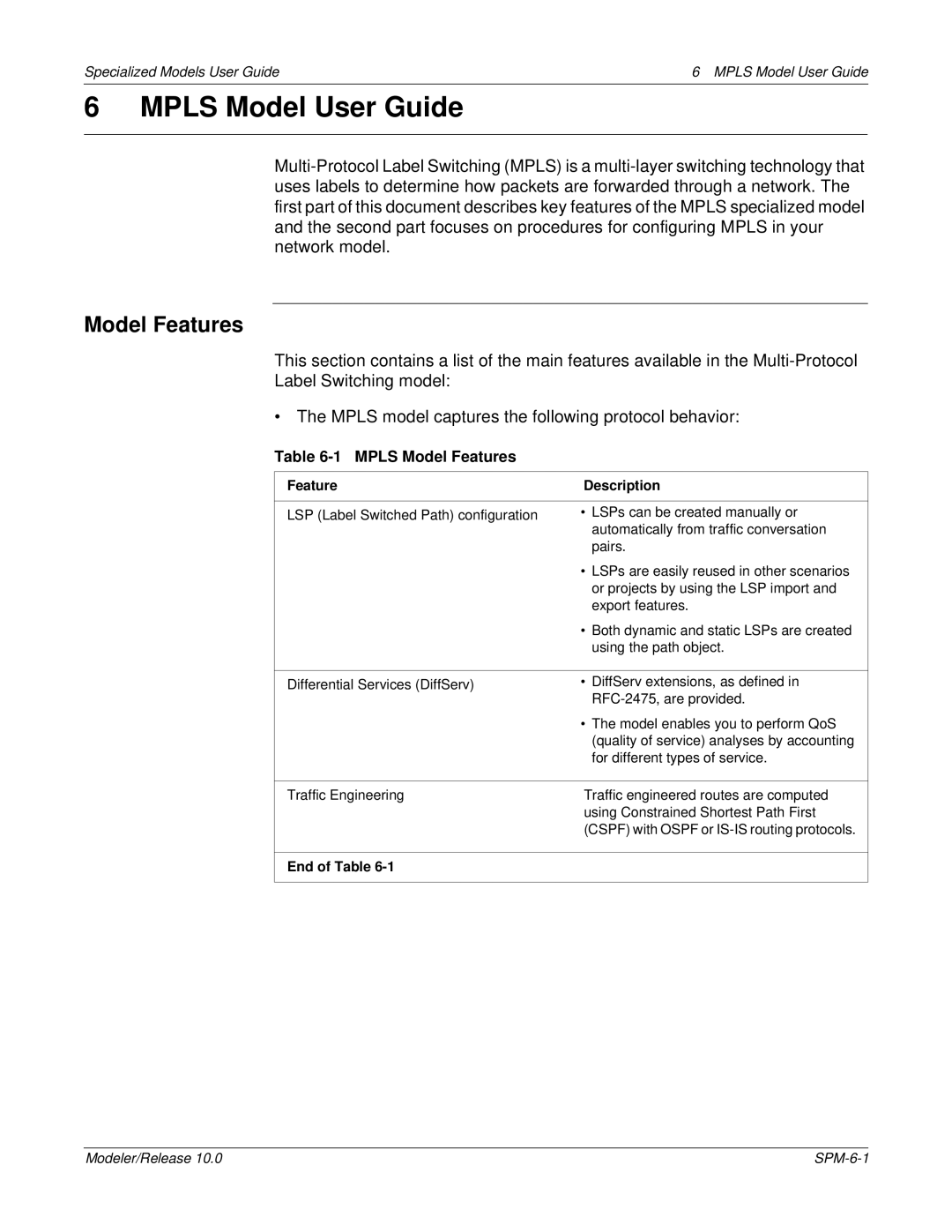
Specialized Models User Guide | 6 MPLS Model User Guide |
6 MPLS Model User Guide
Model Features
This section contains a list of the main features available in the
Label Switching model:
• The MPLS model captures the following protocol behavior:
Table 6-1 MPLS Model Features
Feature | Description |
|
|
LSP (Label Switched Path) configuration | • LSPs can be created manually or |
| automatically from traffic conversation |
| pairs. |
| • LSPs are easily reused in other scenarios |
| or projects by using the LSP import and |
| export features. |
| • Both dynamic and static LSPs are created |
| using the path object. |
|
|
Differential Services (DiffServ) | • DiffServ extensions, as defined in |
| |
| • The model enables you to perform QoS |
| (quality of service) analyses by accounting |
| for different types of service. |
|
|
Traffic Engineering | Traffic engineered routes are computed |
| using Constrained Shortest Path First |
| (CSPF) with OSPF or |
|
|
End of Table |
|
|
|
Modeler/Release 10.0 |
